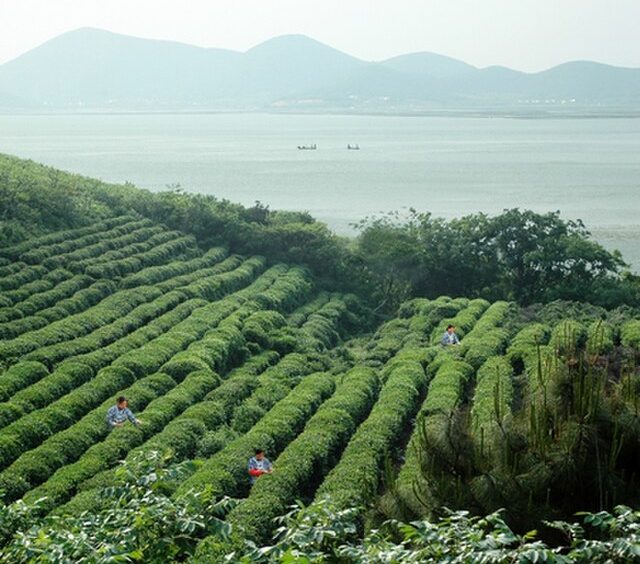Suzhou in Jiangsu province to the west of Shanghai began harvesting its highly-rated Biluochun tea leaves just before March 19, 2024.
This year’s harvest follows the tradition of manual picking to guarantee the best quality for this pan-fried tea. Pan-frying is an oriental tradition that involves firing or toasting raw tea leaves to add flavor to the finished product.
During a typical harvest, locals carry baskets at dawn into the hilly plantations to make progress before the day warms. This remarkable traditional hand-picking culture helped the Suzhou tea belt acquire UNESCO heritage site status in December 2022.
Late Biluochun Tea Harvest
Due to low temperatures in the early part of 2024, the tea shrubs budded a little later than in 2023. This in turn gave them enough time to develop robust leaves, which tea factories are now ordering for processing.
Processors look for the most authentic tea leaves from this region, which usually are thin, curly and slightly hairy. Their spiral shape resembles that of a spring snail, which gives the leaves their Mandarin Chinese name “Biluochun.”
Factories normally blend the crushed leaves carefully to retain their distinct fruity taste and floral flavor. To maximize the quality, the processors hunt for Biluochun tea leaves from the nearby Taihu Lake. The lakeside plantations produce the most expensive finished product because of the nearby moist environment.
Though some areas outside Jiangsu province also produce this tea type, its quality is normally low. This perhaps explains the celebratory atmosphere that visits the tea’s hometown of Suzhou each spring picking season.
Other Famous Tea (s)
Apart from Biluochun, there are even more famous varieties from other areas, especially West Lake Dragon Well tea. Its source is the lake region near Hangzhou in east-central, China.
This Hangzhou type makes the rather pricey green tea, and is popular with the Chinese who pay top dollar for it.
It grows in the hilly region around the West Lake, whose cool climate lends it a special fragrance.
Also joining the ranks of popularity is eastern China’s Huangshan city’s furry-leaved green tea. It also has the winning flavor and aroma as its sister teas from the central-east region of the country.
China is the biggest producer of tea in the world with an annual capacity above 2 million tonnes. Production in 2022 reached a record 3.35 million tonnes, the bulk of which from the south of the Yangtze river.
